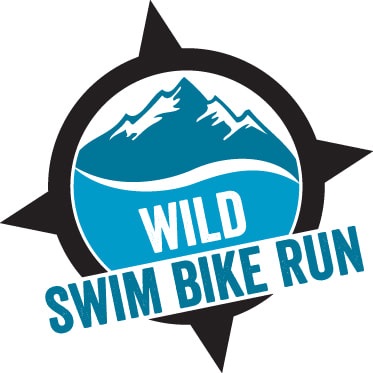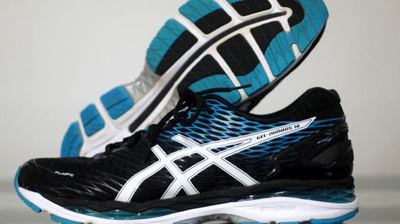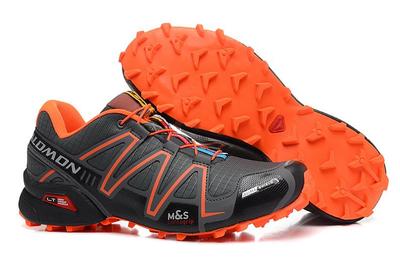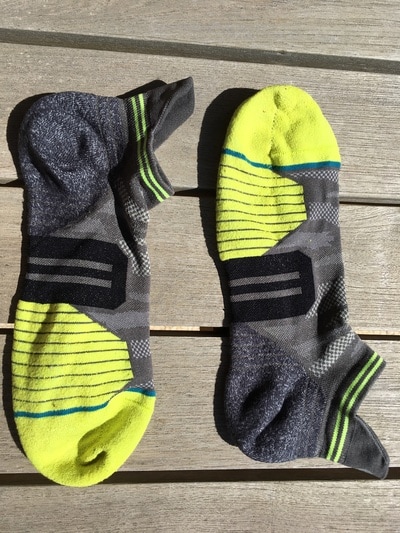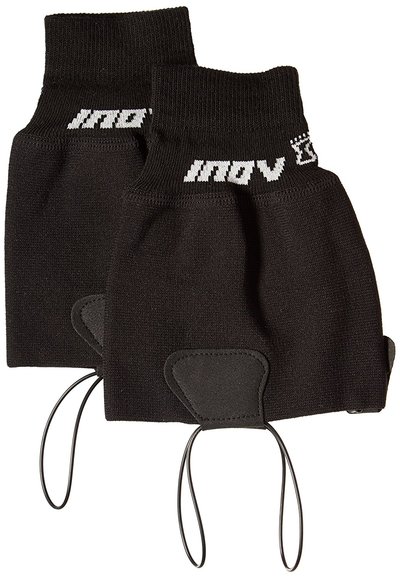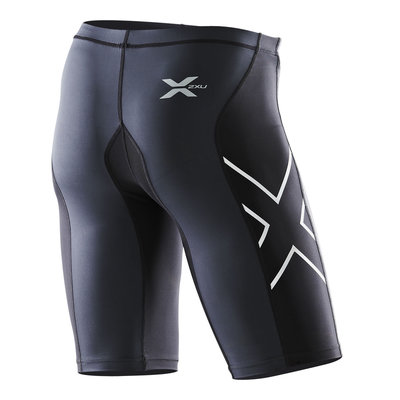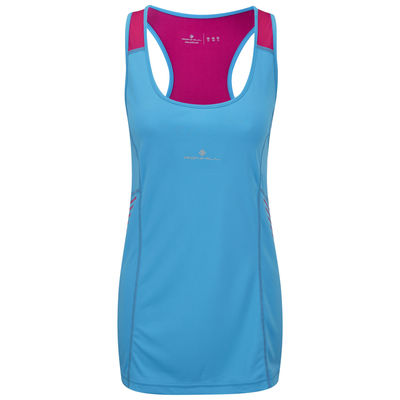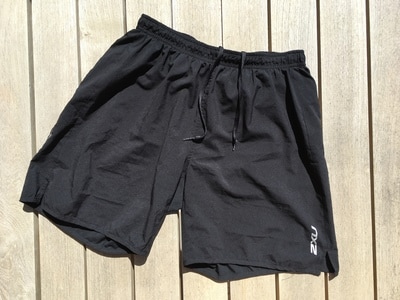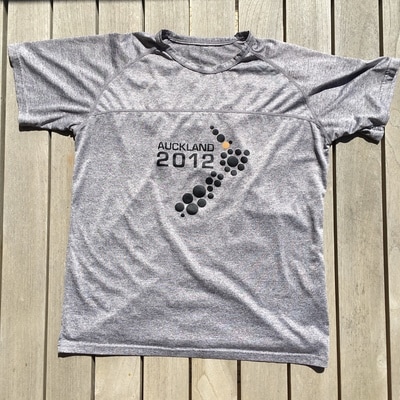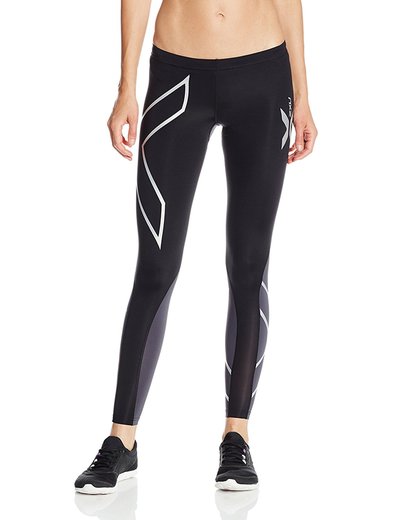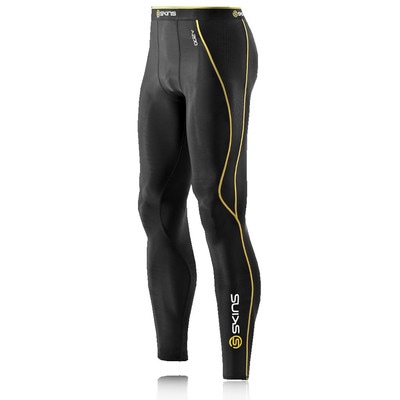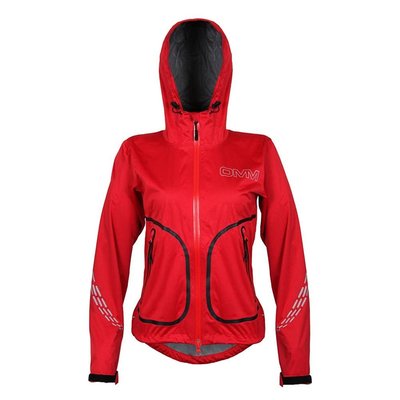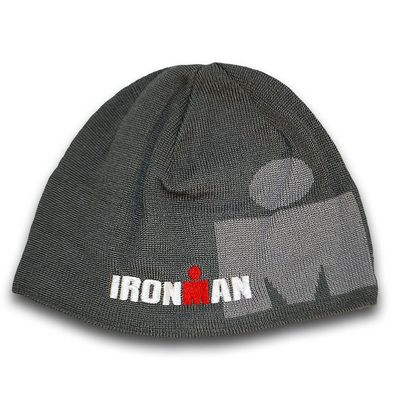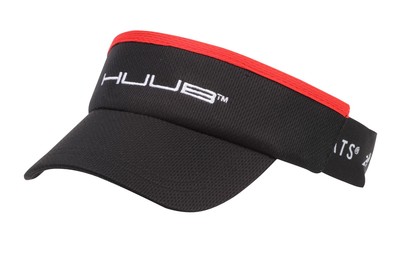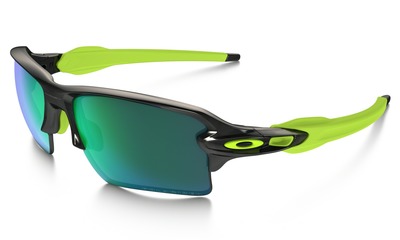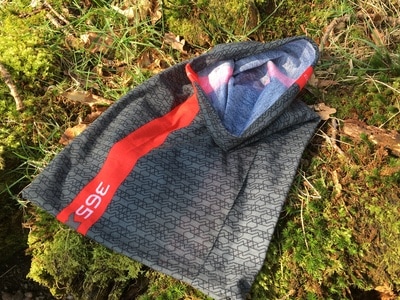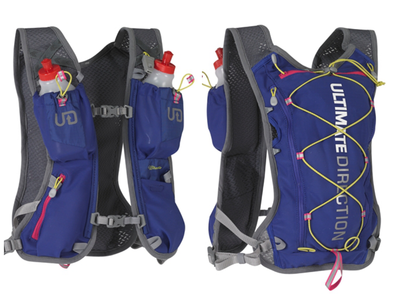What kit and why?
We have looked at a variety of running equipment that will cover everything from a quick run around your local park to alpine epics! One area that we have tried to simplify is footwear, we aren't trying to say anything heretical merely to simplify and consolidate information already out there and our own experience and experiments with kit.
Safety
Regardless of where you are running you should consider safety as part of your equipment list. This is especially the case when sharing roads or in more remote areas. The old adage of 'be safe, be seen' still stands and with a selection of bright or high visibility clothing combined with flashing LEDs dramatically increase your chances of being seen and found!
Footwear your most important decision...
15-20 years ago buying a pair of trainers was a simple affair as you either wanted a road shoe or a cross country shoe. Since then the leisure footwear market has exploded with specialist footwear such as road, trail, triathlon, cross country, cross training and barefoot to name a few! The rapid evolution in sports shoe design has incorporated physiological features such as under, neutral and over pronators plus front, mid and heel strikers. In addition to this add specialist sports insoles and you are faced with a complicated and challenging journey to understand what is best for you. Choosing the wrong footwear can lead to a less than happy experience and injury so it is worth perseverance until you find a shoe that works for you.
This section is aimed to help to enlighten this process, including a method of checking your own foot alignment and foot strike pattern. It is definitely worth chatting through your requirements at a local running shop as they are often staffed with experienced runners who will be able to help you through this process. You'll find that on the most part they are enthusiastic, helpful and supportive!
Foot Alignment
Foot Strike
There is a lot of debate concerning foot strike (heel, mid and forefoot strike) relating to running efficiency/technique and injury rates. If you intend to start running on a regular basis it is worth investigating to better understand your style of running and if you would benefit from a change in technique.
Safety
Regardless of where you are running you should consider safety as part of your equipment list. This is especially the case when sharing roads or in more remote areas. The old adage of 'be safe, be seen' still stands and with a selection of bright or high visibility clothing combined with flashing LEDs dramatically increase your chances of being seen and found!
Footwear your most important decision...
15-20 years ago buying a pair of trainers was a simple affair as you either wanted a road shoe or a cross country shoe. Since then the leisure footwear market has exploded with specialist footwear such as road, trail, triathlon, cross country, cross training and barefoot to name a few! The rapid evolution in sports shoe design has incorporated physiological features such as under, neutral and over pronators plus front, mid and heel strikers. In addition to this add specialist sports insoles and you are faced with a complicated and challenging journey to understand what is best for you. Choosing the wrong footwear can lead to a less than happy experience and injury so it is worth perseverance until you find a shoe that works for you.
This section is aimed to help to enlighten this process, including a method of checking your own foot alignment and foot strike pattern. It is definitely worth chatting through your requirements at a local running shop as they are often staffed with experienced runners who will be able to help you through this process. You'll find that on the most part they are enthusiastic, helpful and supportive!
Foot Alignment
- Under Pronation – When the inside of the heel or area of the foot strike the ground first. This generally causes wear in the inside sole of the shoe. Current medical advice for under pronators are for shoes with increased stability and support.
- Neutral – When the centre of the heel or area of the foot strike the ground first. This generally causes wear through the centre on the sole of a shoe. This allows the individual to wear a wider variety of running shoes.
- Over Pronation or Supination - When the outside of the heel or area of the foot strike the ground first. This generally causes wear on the outside sole of the shoe. This allows the individual to wear a wider variety of running shoes. Current medical advice for over pronators are for shoes with stability and support, less so than under pronators.
Foot Strike
There is a lot of debate concerning foot strike (heel, mid and forefoot strike) relating to running efficiency/technique and injury rates. If you intend to start running on a regular basis it is worth investigating to better understand your style of running and if you would benefit from a change in technique.
- Heel Strike – When the heel of the foot is the first part of the foot to strike the ground. General consensus seems to be a well cushioned heel style of shoe. Unlike mid and forefoot strike, heel strike results in an increased impact/load transfer through the leg.
- Mid Strike – When the mid section of the foot is the first part of the foot to strike the ground. Both mid and forefoot strikers are generally recommended to use a neutral or zero drop running shoe, this means a flat shoe with no drop in height of the sole of the shoes from heel through the mid section.
- Forefoot Strike – When the front of the foot is the first part to strike the ground. Both mid and forefoot strikers are generally recommended to use a neutral or zero drop running shoe, this means a flat shoe with no drop in height of the sole of the shoes from heel through the mid section.
Style of shoes
Check your own foot and strike pattern
The easiest method of doing this is to find a stretch of sand or soft mud. Then walk and jog in a series of parallel lines in the same direction with shoes on and off (barefoot). You now have a comparison chart of your foot alignment and strike patterns. Using this information (worth taking a photo for future reference) you should be able to understand the style of shoe most appropriate to you.
Socks
Another important part of the footwear package, get this right and you will increase comfort and decrease the occurrence of blisters and other friction injuries. Best fit or option is achieved through experimentation as results vary between individuals. This will require you to test thick, thin, cotton, wool, synthetic, double sock and a variety of other combinations before you find the best fit for you. Personal preference and 'fashion' may lead you to choose which height of sock you prefer. You will see triathletes racing and recovering in a variety of of compression socks mostly knee height with colour dictated by Tri-fashion or lack of it!
Gaiters
These are designed to provide a waterproof or protective barrier for your shoes or legs. Available in a variety of lengths, waterproofing and protection. They are particularly useful when running in wet and muddy conditions as they can be shed post run for an easier clean up. Orienteering enthusiasts having been using them for years to provide protection to their lower legs when running through bracken, heather and anything else that may strip your shins. They are also very effective at stopping small stones and other debris which sneak into your shoes resulting annoying stops to empty shoes or having to grit your teeth until the end of your run.
Leggings
Gone are the days of running in baggy tracksuit bottoms with most runners adopting a tighter fitting legging when the thermometer drops. Leggings now come in a range of material, length and features. Manufacturers have been quick to adopt compression technology into their product lines as part of their constant strategy of product development and marketing to increase sales. There is no shame in wearing them as long as you aren't the only person turning up to the pub wearing them!
Shorts
Shorts come in a variety of cut, weight, material and lengths. Modesty, style or a combination of functional elements will normally drive your personal preference. Aside from a lycra short most styles will follow a traditional running short design with numerous features including pockets, key clips, mesh vents and liners. A couple of points worth consideration are that the more features incorporated into the short the higher the chance of damage, wear and tear. Pockets and storage on shorts also encourage you to store keys, phones and other items that will bounce around and annoy you, investing in a hip or arm belt is a neat solution to carrying small items on a run.
Compression Clothing
Compression clothing or the 'emperors new clothes'.... There are groups of medical and sports experts arguing both sides of the benefits of compression clothing arguement. With a healthy dose of cynicism I have tested them whilst skiing, running and post ironman triathlon events and I did feel they offered support, warmth and helped recovery. Whether this was a placebo affect I still couldn't genuinely say but I will continue to use them until the next range of 'emperors new clothes' hit the market!
Vest
The one item of clothing you would immediately identify with running! A great bit of kit for running in warm weather, if you are running somewhere with strong UV you should ensure you slap on the sunscreen.
T-Shirts
A versatile item of clothing available in various cuts, weights and materials. Ideal for use as a base layer, on its own or over the top of a long sleeve base layer. If you are running somewhere with strong UV they provide more protection than a vest. Dependent on the material they will hold more sweat than a vest if you are a particularly sweaty individual.
Long Sleeve Top
The evolution in wicking technology and breathable fabrics allows use in all weathers. If you opt for a layering system a long sleeve top will become an invaluable piece of kit. If you are not a fan of using sun screen the use of a long sleeve top, on super hot days its also a good cooling tool if you soak them in water.
- Road Shoe – Everything in the design of a road shoe is about speed in a forward direction on predictable surfaces (tarmac, track and level grit tracks). They aren’t designed for use on the twisting turns and changeable surfaces encountered offroad. When used offroad on a regular basis you will find the soles and material will wear, tear and delaminate quickly.
- Trail Shoe – Trail shoes are a ruggedized road shoe. Features will include increased protection to the lower section of the shoe, the toe box and heel section. The sole of the shoe will have a more aggressive tread and designed for dynamic movements. Manufacturers produce shoes with differing levels of breathability and waterproofing suiting a variety of climates.
- Cross/All Terrain Shoe - Similar in many ways with trail shoes but generally with a more aggressive tread pattern on the sole. Dependent on which brand and model you buy tread patterns can range from small to large lugs. These are ideal for use in wet, soft ground and mixed terrain. In the UK these are a great winter option if you are running offroad. Manufacturers produce shoes with differing levels of breathability and waterproofing suiting a variety of climates.
Check your own foot and strike pattern
The easiest method of doing this is to find a stretch of sand or soft mud. Then walk and jog in a series of parallel lines in the same direction with shoes on and off (barefoot). You now have a comparison chart of your foot alignment and strike patterns. Using this information (worth taking a photo for future reference) you should be able to understand the style of shoe most appropriate to you.
Socks
Another important part of the footwear package, get this right and you will increase comfort and decrease the occurrence of blisters and other friction injuries. Best fit or option is achieved through experimentation as results vary between individuals. This will require you to test thick, thin, cotton, wool, synthetic, double sock and a variety of other combinations before you find the best fit for you. Personal preference and 'fashion' may lead you to choose which height of sock you prefer. You will see triathletes racing and recovering in a variety of of compression socks mostly knee height with colour dictated by Tri-fashion or lack of it!
Gaiters
These are designed to provide a waterproof or protective barrier for your shoes or legs. Available in a variety of lengths, waterproofing and protection. They are particularly useful when running in wet and muddy conditions as they can be shed post run for an easier clean up. Orienteering enthusiasts having been using them for years to provide protection to their lower legs when running through bracken, heather and anything else that may strip your shins. They are also very effective at stopping small stones and other debris which sneak into your shoes resulting annoying stops to empty shoes or having to grit your teeth until the end of your run.
Leggings
Gone are the days of running in baggy tracksuit bottoms with most runners adopting a tighter fitting legging when the thermometer drops. Leggings now come in a range of material, length and features. Manufacturers have been quick to adopt compression technology into their product lines as part of their constant strategy of product development and marketing to increase sales. There is no shame in wearing them as long as you aren't the only person turning up to the pub wearing them!
Shorts
Shorts come in a variety of cut, weight, material and lengths. Modesty, style or a combination of functional elements will normally drive your personal preference. Aside from a lycra short most styles will follow a traditional running short design with numerous features including pockets, key clips, mesh vents and liners. A couple of points worth consideration are that the more features incorporated into the short the higher the chance of damage, wear and tear. Pockets and storage on shorts also encourage you to store keys, phones and other items that will bounce around and annoy you, investing in a hip or arm belt is a neat solution to carrying small items on a run.
Compression Clothing
Compression clothing or the 'emperors new clothes'.... There are groups of medical and sports experts arguing both sides of the benefits of compression clothing arguement. With a healthy dose of cynicism I have tested them whilst skiing, running and post ironman triathlon events and I did feel they offered support, warmth and helped recovery. Whether this was a placebo affect I still couldn't genuinely say but I will continue to use them until the next range of 'emperors new clothes' hit the market!
Vest
The one item of clothing you would immediately identify with running! A great bit of kit for running in warm weather, if you are running somewhere with strong UV you should ensure you slap on the sunscreen.
T-Shirts
A versatile item of clothing available in various cuts, weights and materials. Ideal for use as a base layer, on its own or over the top of a long sleeve base layer. If you are running somewhere with strong UV they provide more protection than a vest. Dependent on the material they will hold more sweat than a vest if you are a particularly sweaty individual.
Long Sleeve Top
The evolution in wicking technology and breathable fabrics allows use in all weathers. If you opt for a layering system a long sleeve top will become an invaluable piece of kit. If you are not a fan of using sun screen the use of a long sleeve top, on super hot days its also a good cooling tool if you soak them in water.
Gilet
Lightweight gilets are perfect for keeping you warm on colder days, the lightweight shell pertex (windproof) gilets are also very light whilst packing down to the size of a gold ball. A great bit of clothing to have stashed away in your pack or waist bag.
Jacket
Jacket
These now come with a vast array of functionality. the development of sports fabrics has meant that the weight, breathability and waterproofing has vastly improved from the days when it was like wearing a bin bag.
Buff/Neck Warmer
The Buff is an indispensable piece of outdoor kit. Lightweight, warm and incredibly versatile they should be an item you rarely leave the house without.
Warm Hat
Any outdoor activity requires a warm hat, not just for cold weather but as a piece of safety kit. If you do hurt yourself badly staying warm is a means of mitigatting the risk of going into shock. A buff is a great option if you don't want to carry a bulky warm hat.
Cap/Visor
Either will provide protection from the sun and also helps to minimise sweat dripping in your eyes.
Sun Glasses
Perfect for protecting your eyes against the glare of the sun or in the UK, from mud and other debris that maybe thrown up by fellow runners. These range in price hugely with some cheaper models offering next to no UV protection. A key feature is ventilation, if they wrap around your face snugly you many find the fog up quickly or fail to clear when you get moving.
Lightweight gilets are perfect for keeping you warm on colder days, the lightweight shell pertex (windproof) gilets are also very light whilst packing down to the size of a gold ball. A great bit of clothing to have stashed away in your pack or waist bag.
Jacket
Jacket
These now come with a vast array of functionality. the development of sports fabrics has meant that the weight, breathability and waterproofing has vastly improved from the days when it was like wearing a bin bag.
Buff/Neck Warmer
The Buff is an indispensable piece of outdoor kit. Lightweight, warm and incredibly versatile they should be an item you rarely leave the house without.
Warm Hat
Any outdoor activity requires a warm hat, not just for cold weather but as a piece of safety kit. If you do hurt yourself badly staying warm is a means of mitigatting the risk of going into shock. A buff is a great option if you don't want to carry a bulky warm hat.
Cap/Visor
Either will provide protection from the sun and also helps to minimise sweat dripping in your eyes.
Sun Glasses
Perfect for protecting your eyes against the glare of the sun or in the UK, from mud and other debris that maybe thrown up by fellow runners. These range in price hugely with some cheaper models offering next to no UV protection. A key feature is ventilation, if they wrap around your face snugly you many find the fog up quickly or fail to clear when you get moving.
Waist Packs
If you don't want to run with a pack on your back waist packs provide an alternative options for carrying money, keys, phones, fluids, nutrition and extra clothing. The design of waist packs has come on in leaps and bonds from packs that use to bounce
around unless you wore them so tight you lost all circulation to your legs.
Rucksack / Running Vest / Hydration Pack
The increasing popularity of multi-sports has resulted into the development of a wide variety of packs. From traditional rucksacks with hydration bladders to multisports vests closer to military combat vests there is something for everybody. Some key things to consider being:
Heart Rate Monitor (HRM) / GPS Watches
You can spend anything from £30 to £500 on HRM and GPS watches, it is worth understanding exactly what information you want to gain before making a potentially hefty investment. If you are a gadget addict, information junky or a serious competitive athlete the detail an expensive multi-featured device will suit your needs. If you're just looking for the key information required to work with a programme or track performance a device providing heart rate, speed and distance will fulfil 95% of your information requirements.
Smartphone Apps - Strava, MapMyRun...
Love them or hate them they display, collate and provide some excellent information for outdoor athletes. If you don't want to splash out serious cash on a GPS watch, the combination of a basic HRM and smartphone app will provide excellent performance information.
If you don't want to run with a pack on your back waist packs provide an alternative options for carrying money, keys, phones, fluids, nutrition and extra clothing. The design of waist packs has come on in leaps and bonds from packs that use to bounce
around unless you wore them so tight you lost all circulation to your legs.
Rucksack / Running Vest / Hydration Pack
The increasing popularity of multi-sports has resulted into the development of a wide variety of packs. From traditional rucksacks with hydration bladders to multisports vests closer to military combat vests there is something for everybody. Some key things to consider being:
- The larger the pack the more likely you are to fill it with stuff you don't need.
- Features such as key clips, earphone ports, separate pockets and well designed straps/harnessing are really useful.
- Its always worth getting a slightly larger hydration bladder than you think you need. There won't be a great deal of weight or size difference between and useful for bigger days out. A 3 litre pack is the largest bladder commonly available with 1.5 and 2 litre being a commonly available size.
- Everybody is different so it is worth trying out a few options before an expensive purchasing mistake is made!
Heart Rate Monitor (HRM) / GPS Watches
You can spend anything from £30 to £500 on HRM and GPS watches, it is worth understanding exactly what information you want to gain before making a potentially hefty investment. If you are a gadget addict, information junky or a serious competitive athlete the detail an expensive multi-featured device will suit your needs. If you're just looking for the key information required to work with a programme or track performance a device providing heart rate, speed and distance will fulfil 95% of your information requirements.
Smartphone Apps - Strava, MapMyRun...
Love them or hate them they display, collate and provide some excellent information for outdoor athletes. If you don't want to splash out serious cash on a GPS watch, the combination of a basic HRM and smartphone app will provide excellent performance information.
